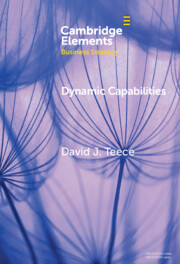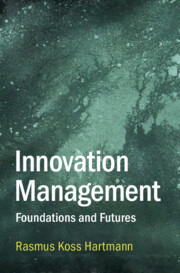Refine search
Actions for selected content:
217 results
4 - Game Theory and Mechanism Design
-
- Book:
- Insight-Driven Problem Solving
- Published online:
- 21 October 2025
- Print publication:
- 30 October 2025, pp 140-166
-
- Chapter
- Export citation
9 - Conventional War and Warfare
- from Part II - The Traditional Security Agenda
-
- Book:
- Understanding International Security
- Published online:
- 11 October 2025
- Print publication:
- 30 October 2025, pp 171-190
-
- Chapter
- Export citation
International lulz: Exploring the strategic logic of trolling in diplomacy
-
- Journal:
- European Journal of International Security , First View
- Published online by Cambridge University Press:
- 24 October 2025, pp. 1-21
-
- Article
-
- You have access
- Open access
- HTML
- Export citation
Sand in the gears: Sabotage in world politics
-
- Journal:
- European Journal of International Security , First View
- Published online by Cambridge University Press:
- 20 October 2025, pp. 1-20
-
- Article
-
- You have access
- Open access
- HTML
- Export citation
16 - Why Did We Lose?
-
- Book:
- Choosing Defeat
- Published online:
- 07 October 2025
- Print publication:
- 07 October 2025, pp 467-495
-
- Chapter
- Export citation

Dynamic Capabilities
- Foundational Concepts
-
- Published online:
- 04 September 2025
- Print publication:
- 02 October 2025
-
- Element
-
- You have access
- Open access
- HTML
- Export citation
Chapter 5 - Peloponnesian War Aims and Strategies, 432–420
-
-
- Book:
- Reassessing the Peloponnesian War
- Published online:
- 21 August 2025
- Print publication:
- 04 September 2025, pp 93-147
-
- Chapter
- Export citation
13 - Circular Business Models and Synergies in Circular Economy Liveable Cities
-
-
- Book:
- The Circular Economy and Liveable Cities
- Published online:
- 05 September 2025
- Print publication:
- 04 September 2025, pp 209-229
-
- Chapter
- Export citation

Dynamic Capabilities and Related Paradigms
-
- Published online:
- 03 September 2025
- Print publication:
- 02 October 2025
-
- Element
-
- You have access
- Open access
- HTML
- Export citation
15 - Influencing strategically
- from Part 3 - Engages Others
-
-
- Book:
- Leading and Managing Health Services
- Published online:
- 15 August 2025
- Print publication:
- 28 August 2025, pp 167-176
-
- Chapter
- Export citation
10 - The Strategies to Increase the ICPPED Ratification with Special Attention to the Asia-Pacific Region
-
-
- Book:
- Enforced Disappearances
- Published online:
- 07 August 2025
- Print publication:
- 21 August 2025, pp 242-268
-
- Chapter
-
- You have access
- Open access
- HTML
- Export citation
6 - The evolution of naval warfare,1450–1650
-
-
- Book:
- The Cambridge History of War
- Published online:
- 18 July 2025
- Print publication:
- 14 August 2025, pp 170-190
-
- Chapter
- Export citation
14 - Navies, technology, and organisation, 1648–1815
-
-
- Book:
- The Cambridge History of War
- Published online:
- 18 July 2025
- Print publication:
- 14 August 2025, pp 366-386
-
- Chapter
- Export citation
4 - Preparing for War
- from Part II - The Enigma of Consensus
-
- Book:
- The Generalissimo
- Published online:
- 31 July 2025
- Print publication:
- 14 August 2025, pp 87-110
-
- Chapter
- Export citation
Abuse of Dominant Position, Effective Judicial Protection and Abuse of Procedure
-
- Journal:
- Journal of Law, Medicine & Ethics / Volume 53 / Issue 3 / Fall 2025
- Published online by Cambridge University Press:
- 28 July 2025, pp. 379-387
- Print publication:
- Fall 2025
-
- Article
-
- You have access
- Open access
- HTML
- Export citation
Booming opportunities and looming challenges? Expansion strategies among finance-controlled providers in the field of Swedish eldercare
-
- Journal:
- Journal of Social Policy , First View
- Published online by Cambridge University Press:
- 23 July 2025, pp. 1-18
-
- Article
-
- You have access
- Open access
- HTML
- Export citation
Introduction
-
- Book:
- Warriors in Washington
- Published online:
- 23 June 2025
- Print publication:
- 10 July 2025, pp 1-11
-
- Chapter
- Export citation
7 - The New Superpower World Order
-
- Book:
- Warriors in Washington
- Published online:
- 23 June 2025
- Print publication:
- 10 July 2025, pp 180-211
-
- Chapter
- Export citation

Innovation Management
- Foundations and Futures
-
- Published online:
- 06 June 2025
- Print publication:
- 10 July 2025
Chapter 1 - The Australian Army, mobilisation and its recent intellectual history
- from Part 1 - Mobilising an army
-
-
- Book:
- Mobilising the Australian Army
- Published online:
- 23 May 2025
- Print publication:
- 30 May 2025, pp 12-28
-
- Chapter
- Export citation
